Space
What would happen if gravity stopped?
Published
2 months agoon


What would happen if gravity stopped?
You may have thought about this interesting question at least once: what if humans were not naturally attached to the earth? Unlike many birds and insects, humans are not born with the biological ability to defy gravity, or the force that literally keeps our feet on the ground.
Along with strong nuclear forces, weak nuclear forces, and electromagnetism, gravity is one of the four fundamental forces of nature. Gravity is the force of attraction between two specific objects. Anything in the universe that has mass, whether it’s a coral reef, a spider, or a popular pop singer, attracts other objects with mass. The strength of this attraction depends on how heavy the objects are and their distance from each other.
When you hear the word gravity, planets come to mind, and because of this, it becomes a little difficult to imagine it on smaller scales. Maybe that’s why this basic prerequisite for our existence is ignored; But what happens if gravity fails? What if gravity disappeared or was reduced to one-tenth? According to the laws of physics, the scenario of sudden removal of gravity from Earth is impossible, and the planet is lucky because of this because if gravity is removed, very bad things will happen. In this article, we mention the consequences of the disappearance of gravity, which you may find interesting to read.
Loss of muscle mass and bone strength
 The lack of gravity can cause irreparable damage to the muscles and bones of the body.
The lack of gravity can cause irreparable damage to the muscles and bones of the body.
Obviously, if gravity is lost, many problems will occur. On smaller scales, the body’s performance will be impaired.
Astronauts have a lot of experience in living in a microgravity environment. “Zero G-force” or what is commonly mistakenly called “zero gravity” is equivalent to “weightlessness” in nature. This happens when the spacecraft’s acceleration cancels out Earth’s gravity. On paper, this may seem attractive, but in practice and for a long time, it can be dangerous and even fatal for human health.
Since humans are born on Earth, which is an environment under the influence of gravity, the growth of the body is strongly affected by the downward pulling force of gravity. In fact, our body is under constant pressure and our muscles and bones are resistant to this pressure. Now, if gravity disappears for a long time and the mechanical pressure loses its effect, the body produces fewer bone-forming cells, and thus the bones lose their mass and become vulnerable to fracture.
The absence of gravity will have more severe consequences. In this situation, the calcium that is normally stored in the bones enters the bloodstream and will lead to consequences such as kidney stones, abdominal movement problems, and many other complications. According to research, the bone strength (14% after six months of space stay) and the muscle mass of astronauts (up to 20% within 5 to 11 days) are significantly reduced.
Your sense of balance is disturbed

It is interesting to know that humans have more than five senses. The sense of balance is one of the most important senses that helps us distinguish between up and down and prevents falls. This inner sense of balance is the one that allows you to ride a bicycle, walk on a straight line, stand on one leg, or move your head and legs without swaying.
All the mentioned tasks are made possible by a complex system inside the inner ear of people. This system maintains the movement path of the body, different paths and their connection with the current position of people, and gravity plays an important role in all these activities.
The balance-regulating organs in the ear, which include the pinna and semicircular canals, are not essential for human survival. However, removing them will cause many problems. To better understand, imagine that you are on a roller coaster and you feel sick from the constant back-and-forth motion, but there is no escape. This situation occurs when there is a problem in the organs of the inner ear.
The number of red blood cells decreases
 In the absence of gravity, the production of blood cells in the body decreases.
In the absence of gravity, the production of blood cells in the body decreases.
The human heart pumps more than 7500 liters of blood daily. Gravity plays a vital role in this process, and since the human body is used to living on Earth, the amount of effort the heart makes depends on the force of gravity. Removing the force of gravity from this equation can deprive vital parts of the body such as hands and feet and the digestive system of blood.
According to Nature, the sudden disappearance of gravity strongly affects blood pressure. Under normal conditions, the brain can withstand a pressure of about 60 to 80 mm Hg, while the pressure in the legs reaches 200 mm Hg due to bearing the entire body weight. This ideal balance in blood pressure is established thanks to gravity.
Now, if gravity suddenly disappears, this is what will happen: the blood pressure in the whole body will reach 100 mmHg, and the effects will show quickly. First of all, the face swells due to fluid drainage, the legs swell, the vision is severely reduced, the blood vessels are torn, and you may also have a stroke, which can lead to permanent damage to the brain. Also, the number of red blood cells decreases, which is known as anemia, which can lead to a lack of oxygen, a longer recovery time after the accident, and a severely compromised immune system.
You can’t sleep well
 You cannot sleep well in weightlessness.
You cannot sleep well in weightlessness.
Despite numerous researches, it is still not clear why humans need sleep for survival. What experts do know is that there is a strong connection between gravity and sleep patterns and sleep quality, and without it, sleep will be severely disrupted.
Astronauts rarely experience good sleep. This problem occurs especially in long-duration spaceflights or long-term low-gravity experiences. Even the simple act of lying down is very difficult for them; Because how can they lie on a certain spot when there is no up and down? Also, their body clock is disrupted which affects sleep patterns. Plus, since there’s no gravity to hold them while they sleep, using sturdy sleeping bags is a must.
Also, if you can even sleep in zero gravity, you are unlikely to have a good sleep experience. According to a 2018 study, since gravity affects the body during waking hours, it also affects the body during sleep. This study shows that gravity affects REM (rapid eye movement) sleep while dreaming. REM sleep is possible when the body is lying in a proper position in zero gravity.
Nothing remains in place
 In the absence of gravity, all objects will float in the environment.
In the absence of gravity, all objects will float in the environment.
Perhaps the most obvious effect of suddenly removing gravity is that nothing stays in place. You can imagine zero gravity as everything floats in the sky. However, the reality will be far beyond this scenario. Everything will be much more chaotic and somewhat funny and of course very chaotic.
Gravity is the reason why your car and belongings are in the workplace and the reason why family members are in their homes. However, remember that the Earth is constantly moving. A person standing on the Earth’s equator actually moves at a speed of more than 1600 km/h. When a car accelerates suddenly, objects and people inside it shake violently. In this sense, removing gravity is just like removing all the belts that prevent everything on Earth from moving around.
In short, in the absence of gravity, everything is not placed on the ground with sufficient strength; Whether it’s a person, a table, or a car, everything will be thrown around at high speed. Even the houses and buildings will not be safe and eventually, there will be a lot of damage.
Everything will float in space
 With the disappearance of gravity, everything will move towards space.
With the disappearance of gravity, everything will move towards space.
Anything that moves around after gravity is removed won’t stay on Earth very long. As the earth rotates, all objects, no matter how big, will float into space. Do you think being in a big building or a shopping center will keep you safe? think again In fact, you will find yourself floating towards the ceiling as everything gets messed up. If you can survive this stage (of course, it should be noted that the equipment and supplies will also float), you can see the whole building moving and floating at a high speed.
And if you think that only objects are affected by the absence of gravity, you are wrong. It is the gravity of the planets that keeps the moons in orbit. In other words, when the earth’s gravity says goodbye to us, the moon will also say goodbye to us.
Earth will lose all its water bodies
 With gravity removed, oceans and seas would no longer remain on Earth
With gravity removed, oceans and seas would no longer remain on Earth
When we say everything disappears in the absence of gravity, we don’t mean just objects, but also larger environments and natural resources.
The bodies of water will not remain on the earth’s soil and there will definitely be a terrifying sight. The huge volume of water rises up and is launched into space like a rocket. As these water bodies move away from the earth, they collapse and form smaller bodies that gradually move away from each other.
At some point, you will probably see whales, dolphins, sharks octopuses, and all kinds of marine life flying and drifting away in bubble water prisons against their will. These scenes may be fun to watch at first, but many of these creatures can die from shock, dramatic temperature and pressure changes, and other dangerous consequences of unexpected flight.
Earth’s atmosphere will also escape
 With the removal of gravity, the Earth’s atmosphere will disappear.
With the removal of gravity, the Earth’s atmosphere will disappear.
You may not think of the Earth’s atmosphere as a body that is affected by gravity. However, the absence of gravity will definitely affect it. The lack of atmosphere will have terrible consequences for the planet Earth.
Like most of Earth’s water bodies, gravity is the only thing holding the Earth’s atmosphere together. In fact, the Moon’s relatively weak gravitational pull is the reason for its very weak atmosphere compared to Earth’s. Because in the absence of gravity, all the things on the earth assume a disorderly and chaotic state, the molecules of the atmosphere also suddenly come out of outer space. Obviously, the atmosphere contains oxygen, which gives life to most of the organisms on Earth.
Also, if the Earth’s atmosphere were to disappear, the air pressure would change rapidly and dramatically. In this situation, if you are on the plane, your ears may be seized, which you usually experience when the plane takes off. The absence of atmosphere makes this situation a hundred times worse.
The earth breaks up and forms several lumps
 In the absence of gravity, the planet Earth breaks up into smaller masses
In the absence of gravity, the planet Earth breaks up into smaller masses
It should be emphasized that the probability of a zero gravity scenario is zero because the only way to change the gravity of the Earth is to change its mass. Since the mass of the Earth is constant and there is nothing to destroy large parts of our planet, we are not in danger. This is good news because if gravity were to disappear, our planet would be doomed.
Gravity is actually the factor that preserves the earth and connects the inner core, outer core, mantle, and crust together like glue, and in this way, these layers remain fixed during the rotation of the earth around its axis and in the orbit of the sun; But in the absence of this glue or gravity, the inner core of the earth will be destroyed due to the intense pressure in a huge explosion. In this situation, the earth is divided into several masses that will float in space.
In the absence of gravity, the sun and other stars fall apart
 As gravity is removed from the stars, these objects will explode.
As gravity is removed from the stars, these objects will explode.
According to NASA, the Sun is so big that it can fit a million Earths in it. This star controls the earth and other planets in certain orbits due to its size huge gravitational force and being in the center of the solar system. Gravity is the factor that keeps the burning solar gases in a ball-like state. This also applies to other stars. On the other hand, black holes are incredibly heavy; In such a way that even light cannot escape from their gravitational pull.
If you extend this thought experiment and remove gravity not only from the Earth but also from the Sun and other celestial bodies, you will not get a pleasant result. Without the gravitational force holding the Sun together, the intense pressures in the Sun’s core would cause a massive explosion. The same thing can happen to all the stars in the world. Due to the distance of other stars from Earth, it is unlikely that Earthlings will witness this celestial show.
The world will become a soup of atoms
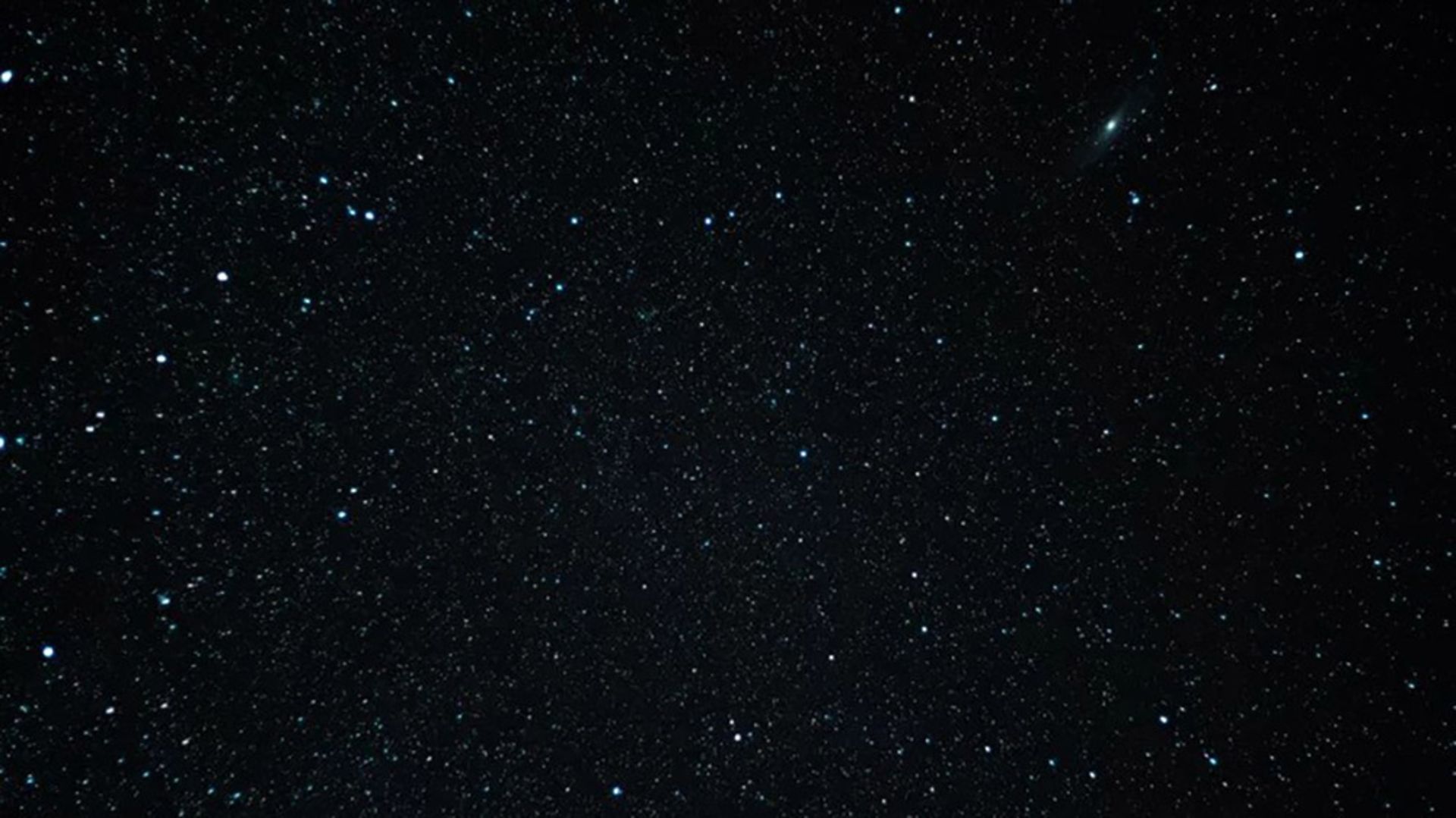 Removing gravity from the universe would turn it into a uniform soup of atoms
Removing gravity from the universe would turn it into a uniform soup of atoms
What would happen if we extended the thought experiment of eliminating gravity to the entire universe? What would be the result if there was no gravity not only on Earth but anywhere in the universe? Simply put, there will be nothing left to separate or admire. In such a situation, the whole world will be completely flat and featureless.
Suppose you could go outside the world and see it beyond its borders. In this case, you will only see a dull and empty void, because the gravity that caused the existence of planets, stars, and black holes is no longer there, and you will only see an empty version of the universe. Since there are no planets for life to form, life as we know it would not be possible to grow in this infinite void.
You will experience an unpleasant and quick death
 In the absence of gravity, man will be destroyed in the worst possible way.
In the absence of gravity, man will be destroyed in the worst possible way.
To better understand the absence of gravity and its terrible consequences, each of the consequences must be described separately. However, although it is impossible to remove gravity from the earth, without it all bad things will happen simultaneously. First of all, your body will be disturbed, objects will move around, oceans and atmosphere will escape the earth, and the planet itself will fall apart like a biscuit that has been hit with a hammer. In addition, the departure of the moon can lead to earthquakes.
It would be like a miracle if someone survived such a situation for just five minutes; Because in such a situation, no one can even run or escape.
There are still many unknowns about gravity, although it is clear that gravity is essential for life on Earth and that the planets depend on it. However, the question “What happens in the absence of gravity?” It is interesting to note; But until we experience it for real, we cannot speak of all its consequences.


You may like
-




What happens when two galaxies collide?
-




The Milky Way; Facts & features
-

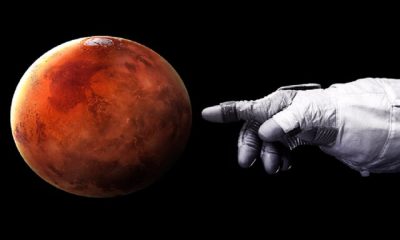


What are the obstacles on the way for humans to reach Mars?
-




History of the world; From the Big Bang to the creation of the planet Earth
-

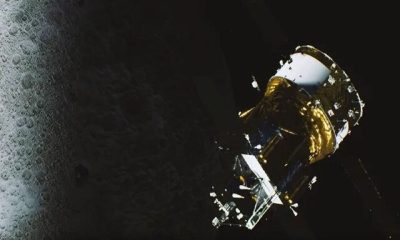


A mystery that is solved by the China’s Chang’e-6 probe!
-




Discover a new answer to the ancient mystery of a Venus!


What happens when two galaxies collide?
Gravity can make extraordinary things happen. This invisible force has a significant effect on cosmic matter. Gravity is the factor that transforms gas and dust into bright stars, transforms irregular rocks into spherical planets and finally collides galaxies with each other. Sometimes two galaxies, and sometimes more, move towards each other. This movement continues until the galaxies collide with each other. In this situation, the internal materials of the galaxies may collide with each other and combine, and as a result, the slow chaos turns them into a huge galactic ball.
Astronomers have observed such events known as mergers in the past. At the beginning of the encounter, it looks like the galaxies have gathered for a space conference. At the peak of this process, gravity distorts the shape of the galaxies, and at the end, an irregular sphere remains. Then the only sign of the merger is the faint flickering of stellar material around the galaxy.
The image below, taken by the Jumnai Telescope in Hawaii, shows the beginning of a merger in remarkable detail. The two galaxies NGC 4567 above and NGC 4568 below orbit each other, their stars pushing each other and new stars shining until everything merges in about 500 million years and the final shape is a heart in the sky.
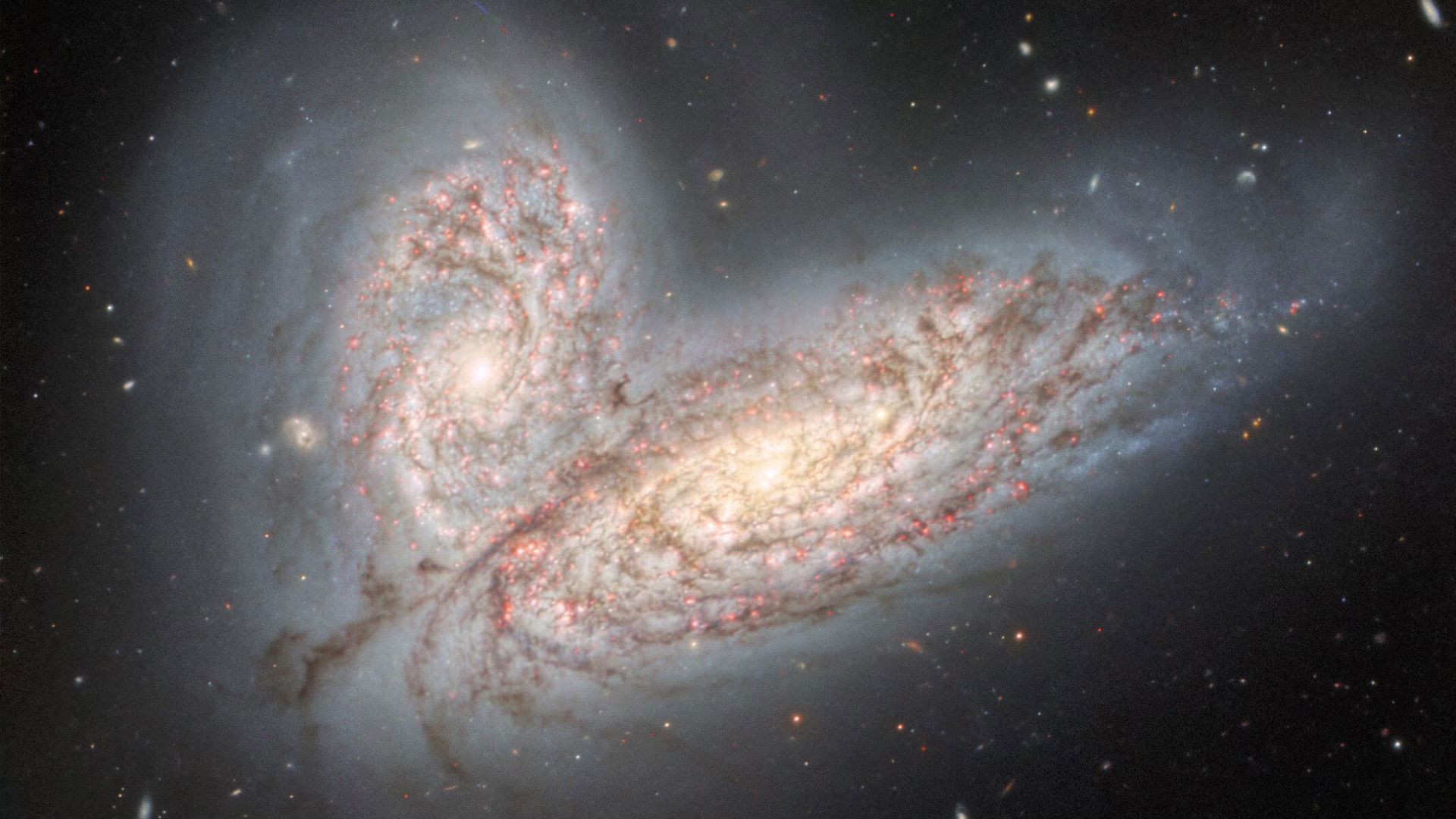
Galactic mergers are among the most fanciful events in the universe. Supernovae and black holes definitely have their charms, But galactic mergers have a lot to say. These events also provide good grounds for daydreaming about extraterrestrial life. For example, consider NGC 4568 and NGC 4567, which are full of stars and most of the stars have planets based on the observations obtained; So maybe NGC galaxies are home to other beings; But what does it feel like to be in the middle of a galactic merger? According to Vicente Rodríguez Gómez, an astronomer at the National University of Mexico:
The night view in the merged galaxies will be very promising. The sky is filled with new stars, and the curved streams of stars, gas, and dust drawn across the sky can be clearly seen. The view of this sky will be especially spectacular if you live on the outer edges of the galaxy. In this situation, the night sky is not as crowded as the center of the galaxy.
Now suppose another galaxy merges with your galaxy in the outer domains. In this condition, this galaxy appears bigger and brighter than any other star in the darkness of the night. Even more exciting, you can view this sight almost without worry because the Sun is highly unlikely to collide with another star despite the collision of galaxies. Moya McTyre, astrophysicist and author of ” The Milky Way: A History of Our Galaxy ” says:
Have you ever seen a band of military musicians? Or a performance in which two groups walk through each other? Stars similarly move through galactic mergers, passing by each other like unison musicians. Although there are many stars, space is still infinite and most stars are not in danger of colliding with anything else.
Of course, if your planet is in a remote place, you may face a problem. The pressure from the collision can throw stars from the edges of a galaxy deep into intergalactic space. On the other hand, even though the stars regularly pass by each other, the space between them can be a little irregular. According to Jehan Kartaltep, an astrophysicist at the Rochester Institute of Technology and one of the researchers of the formation of galaxies:
Galaxies have huge clouds of gas and dust, and if they collide, these huge clouds of gas and dust collide with each other.
As a result, the collision process of gas and dust can create hazy masses of gas and dust in the night sky, which eventually collapse due to their own weight and form new stars. Astronomers on Earth can observe these starburst regions in galaxy merger images.
For example, consider the image below of the Hubble Space Telescope. This image shows the antennae galaxies, whose collision began approximately 600 million years ago, and as their spiral structures disappeared, new star clusters were formed, which can be seen as blue spots in the photo.
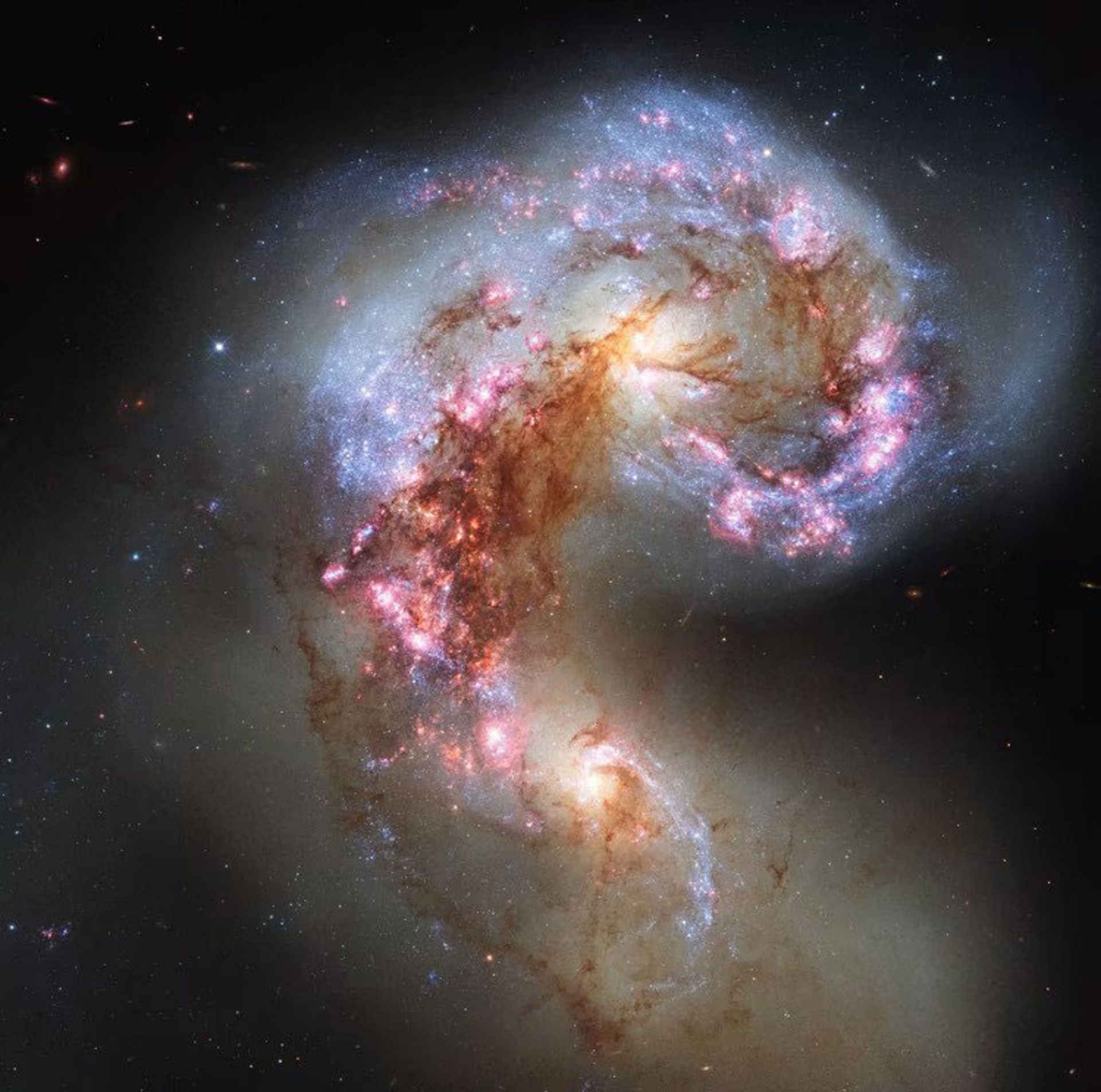
As the material of the merging galaxies migrates, the galaxies’ massive black holes also move and merge into the center of the new galaxy. In their path, these invisible heavy objects pull visible material such as meteors and stars towards them and possibly swallow some of them. Chiara Mingarelli, an astrophysicist at the University of Connecticut and the Flatiron Center for Computational Astrophysics who studies the fate of supermassive black holes in mergers, says:
When the merger of two galaxies begins, the supermassive black holes at their center are transferred to the center of the new galaxy and eventually merge with each other. In the example of three galaxies colliding, the most likely scenario is that two black holes will meet and form a binary system, and when the third black hole arrives, the less massive black hole may be ejected from the galaxy and eventually become a massive black hole wandering in the universe. .
All the above processes, such as the birth of new stars and the wandering of black holes, occur over millions or even billions of years. As a result, the hypothetical inhabitants of NGC galaxies do not see any changes during their lifetime but only know that they live inside a merger. Hypothetical astronomers of this universe could make classifications through archived observations of previous generations, collecting data for future scientists. Just as astronomers on Earth have calculated the Milky Way’s small mergers and the absorption of other small galaxies, hypothetical astronomers in the NGC could gain data about their galaxy’s past.
The Milky Way is on a collision course with another spiral galaxy called Andromeda. Today, Andromeda is seen as a dot in the night sky, but in five billion years, it will collide with our galaxy. The spiral arms of the Milky Way disappear, as does its supermassive black hole. Andromeda’s central black hole with a mass of 100 million solar masses will swallow our black hole with a mass of 4 million solar masses.
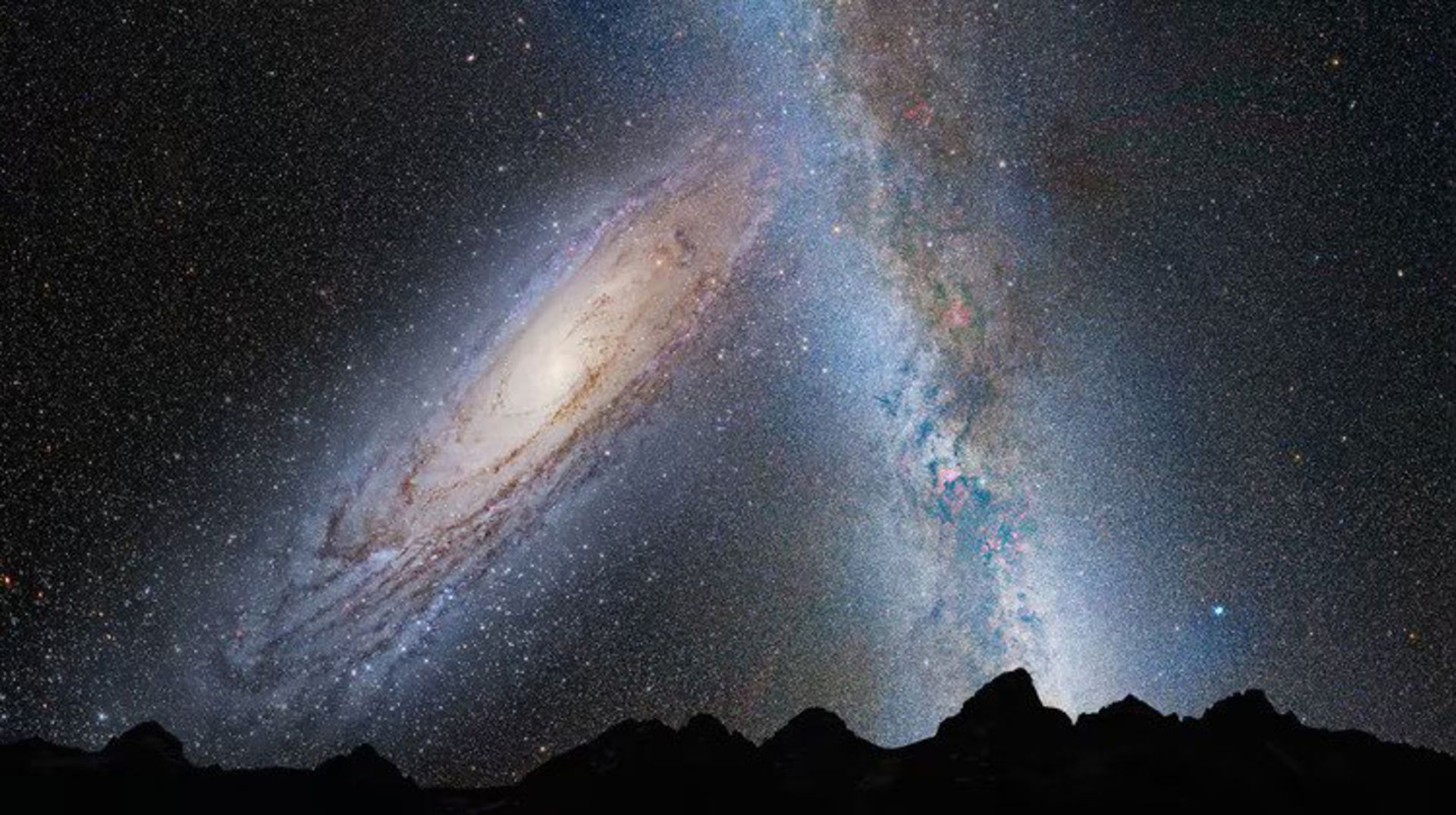
Artistic rendering of the collision between the Milky Way and Andromeda
Although galactic mergers do not lead to noticeable changes in a human lifetime, they are a great opportunity for the astronomers who live inside them. Being alone in an isolated galaxy might be a disadvantage. For example, Earth’s position in the Milky Way prevents astronomers from getting the best vantage points to study the Milky Way. There is also a lot of gas and dust on the way. McTyre says:
We should investigate other spiral galaxies to learn about the behavior and evolution of the galaxy we live in; But if there is another spiral galaxy near us and its angle is such that a large part of it can be seen, it can be studied much easier than our own galaxy.
On the other hand, being an astronomer in the middle of a galactic merger is a bit boring; Because in such conditions, the night sky is very crowded and it is not possible to examine distant objects. According to Rodríguez Gomez: “In such an environment, it is difficult to find a path without light pollution.”


The Milky Way; Facts & features
The Milky Way is a barred spiral galaxy approximately 13.6 billion years old with large rotating arms stretching across the cosmos. The diameter of the disk of our home galaxy is approximately 100,000 light-years and its thickness is 1,000 light-years.
Just like the Earth revolves around the Sun, the Solar System revolves around the center of the Milky Way. Despite moving through space at a speed of approximately 828,000 kilometers per hour, our solar system completes a complete revolution around the center of the galaxy after 250 million years. The last time our planet was in this position, dinosaurs appeared and mammals had not yet evolved.
If the center of the Milky Way is a city, we live on its outskirts. Based on this analogy, our solar system is approximately 25,000 to 30,000 lightyears away from the center of the city. Life in the suburbs is pleasant; We live in one of the smaller neighbors of the Orion-Cygnus arm, which is between the larger Perseus and Carina-Sagittarius arms. If we move towards the center of the city, we can find the arms of the Scutum-Centaurus and the arm of Norma.
Table of Contents
-
What is the reason for naming the Milky Way?
-
Characteristics of the Milky Way
-
The position of the sun in the Milky Way
-
Milky Way black hole
-
Type of Milky Way Galaxy
-
The Future of the Milky Way
-
Evolution of the Milky Way
-
Photography of the Milky Way
-
Milky way research
-
Interesting facts about the Milky Way
-
Conclusion
On a clear night without light pollution, you can see the bright lights of the Milky Way city in the night sky. This milky white spectrum of stars, gas, and dust is a window into the universe around us.
At the heart of the Milky Way is a supermassive black hole called Arc E*. With a mass of over 4 million suns, this black hole sweeps up everything in its vicinity and feeds greedily on the vast source of stellar material around it. In 2022, an image of this black hole was published for the first time.
 The motion of stars in the Milky Way galaxy in the next 400,000 years is based on data from the European Gaia probe.
The motion of stars in the Milky Way galaxy in the next 400,000 years is based on data from the European Gaia probe.
What is the reason for naming the Milky Way?
According to the American Museum of Natural History (AMNH), the name of the Milky Way is derived from its milky white appearance as it stretches across the night sky. In Greek mythology, this milky band appeared because the goddess Hera spread milk across the night sky.
Around the world, the Milky Way is known by different names. For example, in China it is called “Silver River” and in the Kalahari Desert of South Africa it is called “Night Spine”.
Characteristics of the Milky Way
The Milky Way has always been difficult to study. Astronomers sometimes compare trying to study the Milky Way to trying to describe the dimensions and structure of a forest while standing among the trees in the forest. From our position on earth, we definitely cannot have complete nobility of the Milky Way; But two space telescopes launched since the 1990s marked the golden age of Milky Way research with their data. Major steps were taken in particular with the launch of the Gaia spacecraft from the European Space Agency in 2013.
Telescopes allowed astronomers to discern the early form and structure of some of the nearest galaxies, But reconstructing the shape and structure of our home galaxy has been a difficult and slow task. This process involves making catalogs of stars, tracking their position in the night sky, and estimating their distance from Earth.
 The bright band of the Milky Way has fascinated humans for centuries.
The bright band of the Milky Way has fascinated humans for centuries.
Dutch astronomer Jan Evert, who is sometimes referred to as the Master of the Galactic System, was the first person to notice that the Milky Way was not stationary, but rotating, and estimated the speed of various stars around the center of the Milky Way. The name of the Oort cloud, a region containing trillions of comets far from the Sun, is derived from this astronomer.
Gradually, a complex vision of a seemingly ordinary spiral galaxy emerged. At the center of the Milky Way, there is a supermassive black hole, the Arc E*, with a mass of more than four million suns. This black hole was discovered in 1974 and can be observed with radio telescopes near the constellation Sagittarius.
Everything in the Milky Way revolves in a passage that ends in nothing. Around this point of nothing (black hole), there is a dense region of gas, dust, and stars known as the galactic bulge. About the Milky Way, this bump is shaped like a peanut and its diameter reaches 10,000 light years. This bulge hosts 10 billion stars out of 200 billion stars in the entire galaxy. Most of the stars in this sector are old red giants that were formed in the early stages of the galaxy’s evolution.
On the other side of the bulge, there is a galactic disc whose diameter reaches 100,000 light-years and its thickness reaches 1,000 light-years and hosts most of the stars of the galaxy, including the Sun. The stars in the disk are scattered among clouds of gas and stellar dust. When you look at the sky at night, you can see the view of the edge of this disk towards the center of the galaxy, which is very impressive.
 The structure of the Milky Way galaxy from the top angle of the galactic disk.
The structure of the Milky Way galaxy from the top angle of the galactic disk.
The stars in the disc rotate around the galactic center, forming swirling streams that appear to extend like arms from the galactic bulge. The research on the formation mechanisms of rotating arms still has a long way to go, but the latest studies show that these arms were formed in a short period of 100 million years (of the 13 billion years of the galaxy).
Inside the arms, stars, gas, and dust are compacted in the regions of the galactic disk, and this increase in density leads to the formation of more stars. As a result, the stars inside the galactic disk are younger than the stars in the bulge.
Spiral arms resemble highways of gas and stars that move slowly through the arms. As material passes through the spiral’s dense arms, it compresses and forms more stars. The Milky Way currently has four spiral arms. The two main arms are Bersavush and Kaman-Shahtakhteh, and the local arms and the bow are two smaller arms. Scientists are investigating the exact position and shape of these arms with data from the Gaia spacecraft.
The Milky Way disc is not flat, but curved. This disc moves like a sliding roller while rotating. This slip, especially the massive wobble around the galactic center, is slightly slower than the stars in the disc, taking 600 to 700 million years to complete a full rotation. According to astronomers, this fluctuation could be the result of the collision of the Milky Way with another galaxy in the past.
Globular clusters are located around the galactic disk and bulge, which form a collection of ancient stars, as well as 50 dwarf galaxies that orbit or have collided with the Milky Way. All of these are surrounded by a spherical halo of gas and dust that is twice the size of the disk. According to astronomers, the entire Milky Way galaxy is located in a larger halo of dark matter. Since dark matter does not emit any light, its existence can only be detected by its gravitational effects on the motion of the galaxy’s stars. According to calculations, dark matter makes up 90% of the mass of the Milky Way.
The mass of the Milky Way galaxy with dark matter is equal to 1.5 trillion solar masses. The visible matter inside the galaxy is distributed among 200 billion stars, their planets, and clouds of gas and dust in interstellar space. Astronomers are still not sure how many planets there are in the Milky Way, but considering the discovery of several thousand exoplanets in recent years, we can estimate that there are more than 100 billion planets in the Milky Way. The number of star systems is still a mystery.
The position of the sun in the Milky Way
The Sun is 26,000 light-years away from the Arc E* black hole at the center of the Milky Way. With a speed of 828 thousand kilometers per hour, our star completes its orbit around the galaxy after approximately 230 million years.
The Sun is located near the edge of the local arm of the Milky Way, which is one of the two small arms of the galaxy. In 2019, using data from the Gaia mission, astronomers discovered that the Sun is moving on a wave of interstellar gas 9,000 light-years long, 400 light-years wide, and oscillating 500 light-years high above and below the galactic disk. The planets of the solar system do not rotate in the plane of the galaxy but have an inclination of 63 degrees. It’s like we’re moving sideways in the galaxy.
 The Sun is one of the approximately 200 billion stars that make up the Milky Way galaxy.
The Sun is one of the approximately 200 billion stars that make up the Milky Way galaxy.
Milky Way black hole
The black hole at the center of the Milky Way is called Arc E*. This black hole is often silent and this characteristic makes it difficult to observe. According to the 2008 findings of Reinhard Genzel and Andrea Gass, Arc E* has a mass of approximately 4.3 million Suns. The approximate diameter of this black hole reaches 23.5 million kilometers.
The huge gas disk around the E* arc has extended to a distance of 5-30 light years from the supermassive black hole. This disk is very massive and thin, and its gaseous part provides the necessary materials for the activity of the E-bow. This region also emits X-rays due to the gas feeding of the black hole, as its temperature rises up to 10 million degrees Celsius due to friction within the disk.
Scientists are looking for more information about the supermassive black hole of the Milky Way to understand how it formed and the conditions of its growth. There are two scenarios for the formation of this black hole: in the first scenario, smaller black holes grew and grew bigger by feeding on the gas and dust around them. In the second scenario, several smaller black holes have merged together to form a giant black hole.
 Arc E*, as seen by NASA’s Chandra X-ray Space Observatory
Arc E*, as seen by NASA’s Chandra X-ray Space Observatory
In general, scientists are improving models for stellar black holes and intermediate black holes. These objects are formed when giant stars with several times the mass of the Sun collapse after their nuclear fusion stops. Since these stars cannot stop their gravitational collapse, they become a gravitationally powerful mass that can bend time and space around them, so that even light cannot escape.
We gradually learn about the E* arc through images like the first image of a black hole. This image shows the faint halo of hot material surrounding the black hole and its shadow. This image was captured thanks to a huge collection of observatories around the world that formed the Earth-sized telescope called Event Horizon (EHT).
 Image of the supermassive black hole at the center of the Milky Way known as Arc E*. This image was released on May 1, 2022 by the Event Horizon Telescope.
Image of the supermassive black hole at the center of the Milky Way known as Arc E*. This image was released on May 1, 2022 by the Event Horizon Telescope.
Type of Milky Way Galaxy
Scientists are continuously collecting data from the Milky Way. However, in the early 20th century, astronomers believed that all the stars in the sky belonged to our galaxy. In the “Great Debate” of 1920, astronomers such as Herbert Curtis and Harlow Shipley discussed the scale of the universe and the prospect of “island worlds” (galaxies).
On one side of the debate, Shipley believed that the Milky Way is much larger than previously estimated and that we are not at the center of it. He also claimed that “spiral nebulae” like Andromeda were part of the Milky Way. On the other side of the argument, Curtis disagreed with Shipley’s claim about the much larger size of the Milky Way, but believed that large island worlds (galaxies) like Andromeda lay outside the Milky Way.
Astronomers initially believed that all the stars in the sky were in the Milky Way
The debate ended when Edwin Hubble’s measurements of Cephasian variable stars proved that Andromeda was far outside the Milky Way. According to today’s estimates, the Andromeda Galaxy, which is our nearest galactic neighbor, is 2.5 million light-years from the Milky Way.
In the following years, astronomers tried to determine the type of our galaxy. According to the best estimates, the Milky Way is a barred spiral galaxy with a bar-like structure running through the center. Astronomers can determine the shape of the Milky Way by looking at the population of its stars as well as their movement across the sky.
 Andromeda galaxy on a collision course with the Milky Way.
Andromeda galaxy on a collision course with the Milky Way.
The Future of the Milky Way
We know that the Milky Way is located in the local group of galaxies, which includes more than 30 galaxies, including Andromeda, the Triangular Galaxy, and the Leo I galaxy. It is important to understand the nature of our neighbors because they may be closer than we think. The Milky Way moves towards Andromeda at a speed of more than 400 thousand kilometers per hour. No need to worry though, as our galaxy still has another four billion years to hit Andromeda.
For decades, NASA and other space agencies have been trying to observe distant galaxies in order to see what will happen when Andromeda and the Milky Way collide. In short, there is nothing to worry about, but the interesting thing is that these galaxies evolve after the merger.
For example, in 2022, scientists observed a three-way galactic collision with the Hubble Space Telescope and came to some interesting views about it. The largest galaxy of this group was in a coherent orbit with two other galaxies and due to very high gravity, it absorbed part of their material. This process led to the creation of streams of gas, dust, and other materials that flowed through the larger galaxy and could even be seen from Earth.
 Investigating galactic collisions will help us explore the future of the Milky Way and Andromeda.
Investigating galactic collisions will help us explore the future of the Milky Way and Andromeda.
Although the Milky Way’s arms will certainly be lost in the process, the stars will be safe because the space between them is so vast. In other words, don’t look for stellar collisions in galactic mergers, because they won’t happen in practice. However, due to the influx of large amounts of material into our galaxy, the birth of stars and the luminosity of our galaxy will increase, and this population increase will continue for years after the collision.
So our solar system might survive because of the low risk of a stellar collision, but we would find ourselves on a different path around the galactic center. One effect of the collision will be to change the constellations we see from Earth, as the stars’ orbits shift and new stars are added to the mix.
Evolution of the Milky Way
The evolution of the Milky Way began when clouds of gas and dust began to collapse due to gravity. The first stars were born from these clouds and today we see them in clusters all over the world. The oval halo was also formed at a short distance following the flat galactic disk. Our galaxy was small in the beginning and grew with the inexorable force of gravity.
90% of the Milky Way is made up of dark matter
However, there are still many mysteries about the evolution of the Milky Way. A method called galactic archeology is slowly unraveling some of the mysteries of life in the Milky Way thanks to the Gaia mission. Gaia’s mission is to measure the positions and distances of more than a billion stars, as well as their light spectra, which allows scientists to understand their composition and age.
Using star position data, astronomers can determine the speed and direction of star movement in space. Because everything in space follows paths, astronomers can reconstruct the paths of stars from billions of years ago. Combining these reconstructed trajectories into a stellar movie can reveal the evolution of galaxies over several epochs.
 Contrary to expectations, the dwarf galaxies around the Milky Way are new
Contrary to expectations, the dwarf galaxies around the Milky Way are new
Evidence suggests that the Milky Way has collided with smaller galaxies during its evolution. In 2018, a group of Dutch astronomers discovered a group of 30,000 stars that were moving in sync and in the opposite direction to the stars in the dataset. This motion pattern was consistent with what scientists had seen in computer simulations of galactic collisions. These stars were different in terms of color and brightness, and this showed that they came from another galaxy.
The remnants of another, younger collision were spotted a year later. The Milky Way has been swallowing up smaller galaxies until today. A galaxy called the Sagittarius (not to be confused with a black hole) orbits close to the Milky Way and has collided with the Milky Way’s disk several times over the past seven billion years. Using data from Gaia, scientists found that these collisions led to periods of intense star formation in the Milky Way, affecting its spiral shape. The research also suggests that our Sun was born during one of these collisions around 4.6 billion years ago.
Photography of the Milky Way
To photograph the Milky Way we need a dark night sky. As a result, we have to go to places free of light pollution, and photography equipment is needed to record the little light in the sky. Fortunately, the Milky Way is visible in both the northern and southern hemispheres and can be photographed using amateur photography equipment. For this, you need equipment such as a tripod, different types of focus, and different lenses.
 To photograph the Milky Way we need a dark night sky.
To photograph the Milky Way we need a dark night sky.
Milky way research
The Gaia spacecraft has made three updates to the stellar mass catalog since the beginning of its mission. Astronomers around the world continue to analyze the data in search of new patterns. Data from Gaia currently account for more research papers than the famous Hubble telescope. Gaia will continue its mission to survey stars until at least 2025, and its catalog could occupy astronomers for several decades.
Before Gaia, the largest data set on the positions and distances of stars in the Milky Way came from the Hipparchus mission, named after the ancient Greek astronomer. This astronomer mapped the night sky 150 years before Christ. The Hipparchus spacecraft observed almost 100,000 of the brightest stars near the Sun, while Gaia’s tally is a billion stars.
Although Gaia has observed less than 1 percent of the stars in the galaxy, astronomers can expand on their findings and simulate the behavior of the entire Milky Way galaxy.
Interesting facts about the Milky Way
- Nearly 90% of the Milky Way is made up of dark matter. Dark matter is invisible, yet its presence can be felt through its gravitational effects on galaxies.
- In the past, astronomers believed that all the stars in the universe were located in the Milky Way. Following the great debate, Edwin Hubble’s observations proved that the Milky Way is just one of billions of galaxies in the universe.
- The oldest star in the Milky Way is called HD 140283. This star, also known as Methuselah, is at least 13.6 billion years old.
- The Milky Way moves in space at a speed of approximately 600 km/s. Finally, our galaxy will collide with the Andromeda galaxy in about 4 billion years.
- If the Milky Way is reduced to less than 100 meters in diameter, the diameter of the solar system will be less than one millimeter.
- Nearly 17 billion exoplanets in the Milky Way are in the life belt of their planetary systems. Our galaxy must have between 100 and 200 billion planets, But the actual number is probably much higher than this estimate.
- Around the galactic disc are spherical halos of old stars and globular clusters. Nearly 90% of other stars are located within 100,000 light years from the center of the galaxy.
- The Milky Way and Andromeda are from the local group of galaxies. These two galaxies are the largest members of this group. 30 other galaxies are in this group.
- The supermassive black hole at the center of the Milky Way is called E*. The mass of this black hole reaches 4 million solar masses.
Conclusion
The Milky Way galaxy is the home of the solar system and the Earth. The Milky Way is named after the bright band that appears across the night sky. Our galaxy is home to more than 200 billion stars and is more than 100,000 light-years across.
Arc E* is the supermassive black hole at the center of the Milky Way with 4 million solar masses. The Milky Way has absorbed smaller galaxies in the past and has reached its current spiral bar shape. Our galaxy will merge with the Andromeda galaxy in the next 4 billion years.
Space
What are the obstacles on the way for humans to reach Mars?
Published
5 days agoon
15/05/2024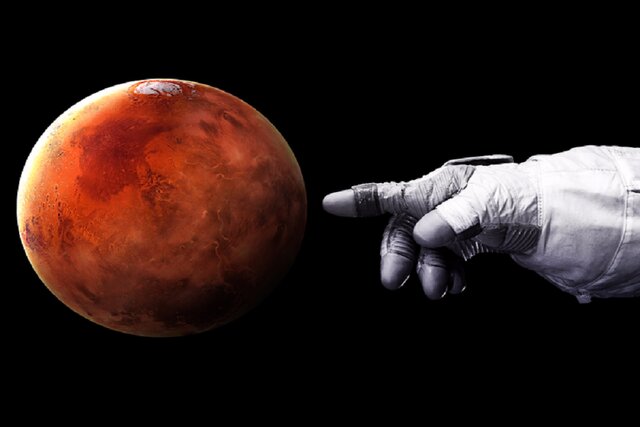

Sending the first humans to Mars has not only been a dream for countless generations, but also dates back to the early modern era. Also, one of the topics of the space age is the planning of such missions, and it is considered an integral part of the current vision for the future of space exploration, but this long-standing dream has not yet been realized.
What are the obstacles on the way for humans to reach Mars?
In the last 20 years, the public has heard claims that NASA will send the first humans to Mars by the early 2030s. First the moon, then to Mars! This is the plan NASA seemed to be sticking to for a while.
According to IA, in recent years, other players, including the China National Space Agency (CNSA) and Elon Musk’s commercial space giant, SpaceX, have joined the “race for Mars“. According to several sources, China, like NASA, plans to build infrastructure on the moon that will help the country send its first astronauts to Mars as early as 2033.
SpaceX’s plans are even more ambitious, with missions planned for the late 2020s and plans to build a self-sufficient city on Mars before the end of the decade. Unfortunately, many naysayers have said that reaching Mars by 2033 or sooner is unrealistic.
There have also been numerous delays along the way, showing how the entire Moon-to-Mars mission could fall behind its planned timeline.
2040 may be a more likely year for a manned mission to the surface of Mars, according to statements issued last summer by Deputy Administrator Jim Reuter. While delays are common in spaceflight, a seven-year delay seems significant and raises questions.
For example, why does such a mission take so long? And what would it take to send the first humans to Mars?
Answering these questions requires recalling memories.
The journey begins
Efforts to carry out missions to Mars began in 2004 with the announcement of a project called Vision for Space Exploration (VSE) by NASA. This vision came in response to the Space Shuttle Columbia disaster, the state of human spaceflight at NASA, and a desire to rekindle public interest in space exploration.
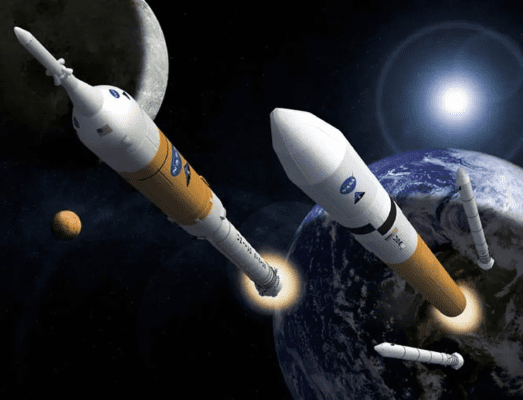

The project’s specific goals included completing the International Space Station (ISS), retiring the Space Shuttle by 2010, and creating a new fleet of heavy launch vehicles that would enable manned missions to the Moon, Mars, and beyond.
The plan included a series of robotic missions to the Moon to prepare and support future human exploration activities that began in 2008.
The plan also supports the use of lunar exploration, science, and resources to develop the technologies and systems necessary to support sustainable human space exploration to Mars and other destinations.
Meanwhile, NASA will resume sending robotic missions to Mars to search for evidence of life and prepare for the eventual arrival of manned missions. This led to the formation of NASA’s Mars Exploration Rover (MER) program, which consisted of the Spirit and Opportunity rovers and the Curiosity and Perseverance rovers.
Following this, the NASA Authorization Act of 2005 officially launched the Constellation Program.
The program called for a new group of launch vehicles, including a crew launch vehicle (CLV) and a cargo launch vehicle (CaLV), which led to the design of the Ares I and Ares V rockets.
Other vehicles included the Crew Exploration Vehicle (CEV) and the Lunar Surface Access Module (LSAM).
NASA planned to use Eriz 1 and 5 back-to-back to send astronauts to the Moon and Mars. The crew was to be launched using a two-stage Ariz-1 rocket capable of delivering 56,000 pounds (25,400 kg) to low Earth orbit (LEO). The payload was sent separately on Ariz 5, which was capable of sending 88,000 kg into low Earth orbit. This program came to fruition in 2009 when NASA completed the Launch Stop System (LAS) and the first stage of the Ariz 1 rocket. The second one was successfully tested on October 28 of the same year.
Unfortunately, the Constellation program was canceled in 2010 due to the global financial crisis known as the “Great Recession” that began in 2007-2008. Almost a year later, the Obama administration signed off on the Mission to Mars.
Details and goals of the program were published in the NASA Authorization Act of 2010 and the US National Space Policy of the same year. NASA’s priorities in this matter are summarized as follows:
Our next step is deep space, where NASA will send a robotic mission to capture and guide an asteroid into lunar orbit. Astronauts aboard the Orion spacecraft will explore the asteroid in the 2020s and return to Earth with samples. This experience in human spaceflight beyond low-Earth orbit will help NASA test new systems and capabilities, such as solar electric propulsion.
Beginning in fiscal year 2018, NASA’s powerful Space Launch System rocket will enable these missions to test new capabilities. Human missions to Mars will rely on Orion, an evolved version of the Space Launch System rocket that will be the most powerful launcher ever to fly.
In many ways, “Journey to Mars” picked up where the Constellation program left off.
While the Ariz 1 rocket and lunar lander were discarded, the Ariz 5 launcher and crewed exploration spacecraft were retained and became the basis for the Space Launch System (SLS) and the Orion spacecraft.
Timelines were also updated, with missions to Mars planned for the early 2030s.


The proposed journey will include three phases and 32 launches of the Space Launch System between 2018 and 2030. These missions send all the necessary components to space between the Earth and the Moon and then to space near Mars before landing the crew on the surface of Mars.
Phase one, called the Earth-based phase, will focus on further long-term studies on the International Space Station until 2024 and testing the Space Launch System and Orion spacecraft. This included Exploration Mission 1 (EM-1) in 2018, the first flight of the Space Launch System, and the second unmanned test flight of Orion.
As with the Constellation program, NASA also planned to launch an Asteroid Redirection Mission (ARM) in 2020, in which a robotic spacecraft would rendezvous with a near-Earth asteroid and pull it into lunar orbit.
Exploration Mission 2 (EM-2) will include a manned flyby of the Moon and asteroid ARM between 2021 and 2023. At this point, NASA moves to Phase Two, shifting the focus from Earth to the space between the Earth and the Moon. The multiple launches of the space launch system will bring the important components of the mission to the lunar surface and orbit at this stage.
Since 2012, these elements have included the lunar gateway known as the Deep Space Habitat, an orbiting space station consisting of a Power and Propulsion Element (PPE), a Habitat and Logistics Base (HALO), a refueling supply system, and infrastructure. and has a communication module (ESPRIT), an international habitation module (I-Hab), and a reusable lunar lander.
Other elements include the Artemis Base Camp, which consists of a lunar base surface habitat, a habitable mobile platform, a Lunar Ground Vehicle (LTV), and a Deep Space Vehicle (DST). The spacecraft will integrate with Orion to transport a crew of up to four to Mars and other deep space destinations.
In the early 2030s, phase three (ground-independent) will begin, which will include essential elements delivered to Mars by a deep space vehicle. This second space station will be equipped with a reusable Mars lander that will allow the crew to perform scientific operations on the surface and then return to orbit.
A road map is formed
In 2017, NASA’s long-term vision to return astronauts to the Moon and Mars began. According to the National Aeronautics and Space Administration’s 2017 Transfer Authorization Act, NASA’s priorities for the Moon to Mars program were determined.
These priorities included continued development of the Space Launch System, Orion, the Lunar Gateway, and other critical mission elements. The bill also directed NASA to scrap the asteroid reorientation mission in favor of something more cost-effective. Other priorities included expanding the US commitment to the ISS and restoring domestic launch capability through the Commercial Orbital Transportation Service (COTS) and the Commercial Crew Program (CCP).
According to their timeline, the construction of the Moongate space station will be completed by 2028. The first manned missions to Mars will be launched from the Moon Gate in 2033. The crew will spend up to a year conducting science operations, then make their return trip to Earth.


The spacecraft and crew will then spend 6 to 9 months en route, returning to the lunar gateway and landing on Earth with the Orion capsule. Subsequent missions are carried out once every 26 months. These missions will lead to the establishment of a long-term habitat on Mars, allowing for return visits. It could also deliver the first Mars sample to Earth, similar to how the Apollo astronauts returned moon rocks for analysis.
Read more: Can humans endure the psychological torment of living on Mars?
However, by 2019, NASA was forced to reevaluate its priorities and long-term goals as the Trump administration inaugurated a new program.
As you can see, NASA’s long-term vision for the first manned missions to Mars has evolved since its inception 20 years ago, and even in its early stages, there were doubts that the timelines and commitments were realistic. With all these challenges, the most important pressure factors had not yet arrived. You can read these factors in the second part of this report.


How to rejuvenate an aging immune system?


How can hacking the immune system help slow aging?


The Biography of Jim Simons


How have bees domesticated viruses?


Why do most mammals have five fingers?


Xiaomi Pad 6S Pro review


AI PC; revolutionary technology of the future?


Can humans endure the psychological torment of living on Mars?


Motorola Edge 50 Pro review, technical specifications


Samsung Galaxy A55 vs Galaxy A35
Popular
-



 Technology10 months ago
Technology10 months agoWho has checked our Whatsapp profile viewed my Whatsapp August 2023
-



 Technology10 months ago
Technology10 months agoSecond WhatsApp , how to install and download dual WhatsApp August 2023
-



 Technology11 months ago
Technology11 months agoHow to use ChatGPT on Android and iOS
-



 Technology11 months ago
Technology11 months agoThe best Android tablets 2023, buying guide
-



 AI1 year ago
AI1 year agoUber replaces human drivers with robots
-



 Humans1 year ago
Humans1 year agoCell Rover analyzes the inside of cells without destroying them
-



 Technology11 months ago
Technology11 months agoThe best photography cameras 2023, buying guide and price
-



 Technology11 months ago
Technology11 months agoHow to prevent automatic download of applications on Samsung phones
